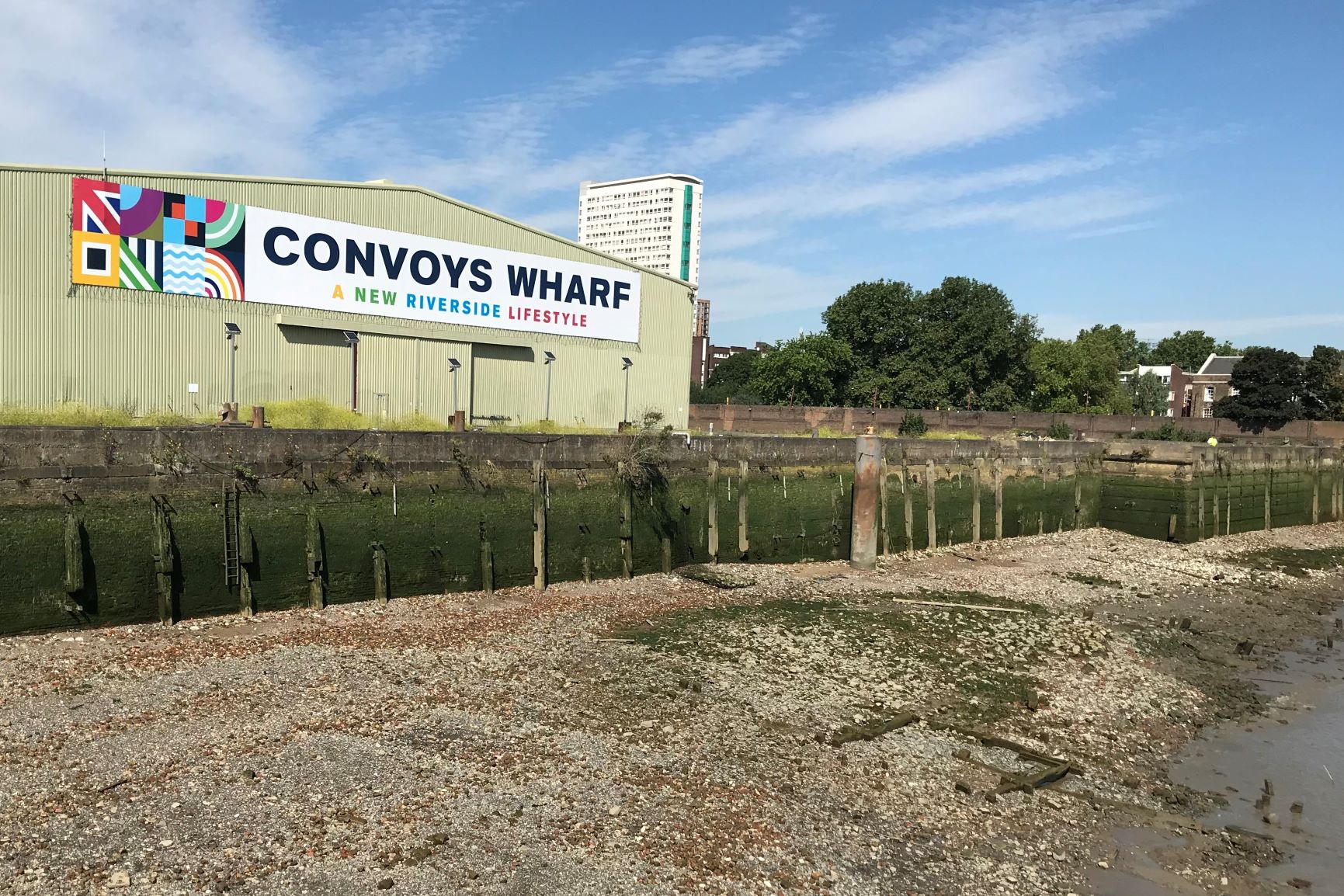Aworth News

The development of Convoys Wharf
July 29, 2019
Over the years, many of the sites we have been asked to survey have had historical significance. This certainly applies to Convoys Wharf in Lewisham, London. We were first asked to survey the site 12 years ago. Now the site is set to be developed.
Convoys Wharf, formerly called the King’s Yard has a rich maritime history. It was first developed in 1513 by Henry VII to build vessels for the Royal Navy, while it also covers most of the site of Sayes Court, home of the diarist John Evelyn.
Our initial work at Convoys Wharf involved undertaking a comprehensive 1:200 scale topographical survey for 2D AutoCAD, together with a 3D surface model of the site for planning. The topographical survey was undertaken to RICS Measured Surveys of Land, Buildings and Utilities, 3rd edition.
Subsequently, we have undertaken a dimensional survey, materials, photographic and visual condition survey of the campshed structure in the River Thames. This challenging survey was completed successfully around safe tidal conditions and using the latest remote surveying instrumentation.
You may like to know that ... A campshed is a facing of piles and boarding along the bank of a river, or at the side of an embankment, to protect the bank from the action of the current, or to resist the out-thrust of the embankment. The word has been used since the middle ages for embanked platforms adjoining the Thames' wharfs. The bed of the river sloped and was made of soft mud, sand or gravel. To stop barges tipping up at low tide, wooden piles were used to create platforms.
Plans for the 16-hectare plot at Convoys Wharf involve a development of 3500 new homes and the restoration of the Grade II listed Olympia building – a unique cast-iron building constructed in the 1840s. Convoys Wharf is set to be developed into a new vibrant waterfront, with Thames-side public access opened for the first time in 500 years, along with cultural and commercial life, alongside housing.








